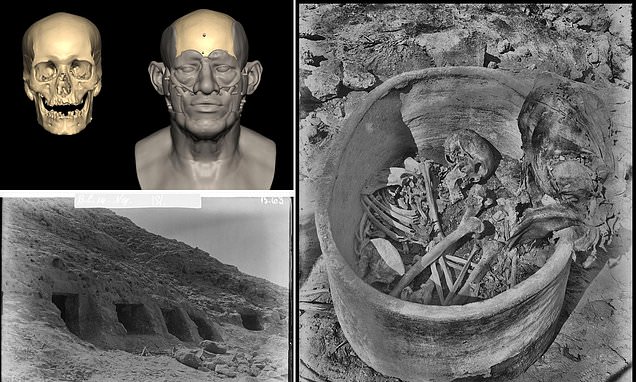New DNA Analysis Sheds Light on Ancient Egyptian Civilization
The recent examination of a 4,500-year-old skeleton uncovered in the Nile Valley has provided significant insights into the origins of the Ancient Egyptian civilization. This pioneering study reveals that the individual, who was likely a potter and lived to the age of 60, had about 20% of his DNA traceable to ancestors who resided over 1,500 kilometers away in Mesopotamia, in present-day Iraq. This discovery marks the first biological evidence linking the two civilizations and offers new explanations for Egypt’s evolution from a collection of farming communities into one of the world’s most formidable civilizations.
Implications for Historical Understanding
Research led by Professor Pontus Skoglund at the Francis Crick Institute in London highlighted the potential of DNA analysis to illuminate historical events and figures, moving beyond simple written accounts. According to Prof. Skoglund, “If we gather more DNA data and contrast it with archaeological and cultural evidence, it will enrich our understanding of history.”
The DNA sample was sourced from a bone in the inner ear of the remains, which were buried in Nuwayrat, a village located 265 kilometers south of Cairo. Historical context indicates that between 4,500 and 4,800 years ago, significant developments were taking place in both Egypt and Mesopotamia. While archaeological sites have suggested previous interactions between these regions dating back around 10,000 years, this study is the first to provide definitive evidence of direct contact during a pivotal period.
A Window into Daily Life
Adeline Morez Jacobs, who analyzed the remains for her PhD at Liverpool John Moores University, states this research unveils critical evidence of migration and the exchange of knowledge between two contemporary civilizations. “This is the first unmistakable proof that there was significant migration of people and information between these regions,” she explained, underlining the importance of this discovery in understanding how both civilizations developed their early writing systems.
The burial, which occurred before the practice of artificial mummification became widespread, likely contributed to the preservation of valuable DNA. Dental analysis revealed that the man had spent his formative years in Egypt, and further examinations determined details about his lifestyle and profession.
Insights from the Skeleton
Professor Joel Irish from Liverpool John Moores University conducted a meticulous examination of the skeleton to reconstruct the individual’s life. He noted that the man, who measured approximately 5 feet 2 inches tall, showed signs of intensive labor indicative of a potter’s life. The enlarged hook-shaped bone at the back of his skull suggests he frequently looked down, indicating a profession that required sustained focus on his work.
In particular, the skeletal remain’s structure implies that he was accustomed to working long hours sitting on hard surfaces and lifting heavy pottery items, which points to a physically demanding lifestyle. “This shows he worked his tail off. He’s worked his entire life,” Prof. Irish remarked as he brought the man’s story to the forefront.
A Historical Opportunity
Dr. Linus Girdland Flink emphasized the serendipitous nature of this discovery. “This skeleton survived bombing during the Blitz that destroyed much of the human remains in the collection,” he recounted. The ongoing analysis provides a glimpse into the ancestral roots connecting these ancient civilizations and underscores the complexity of human migration in this era.
Future Research Directions
The published findings in the journal Nature open doors to further research, allowing scientists to delve deeper into the movement of peoples across regions and the exchanges that shaped ancient societies. Researchers are optimistic that subsequent DNA analyses will further clarify the timeline and extent of interactions between these formative civilizations.
| Feature | Details |
|---|---|
| Age at Death | Approximately 60 years |
| Height | 5 ft 2 in |
| Occupation | Potter |
| DNA Ancestry | 20% Mesopotamian |
| Burial Context | Ceramic pot, hillside tomb, pre-mummification |


